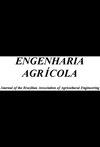CAN ACCURACY ISSUES OF LOW-COST SENSOR MEASUREMENTS BE OVERCOME WITH DATA ASSIMILATION?
IF 0.9
4区 农林科学
Q3 AGRICULTURAL ENGINEERING
引用次数: 0
Abstract
The use of mechanistic plant growth models relies on the availability of high-quality inputs to reduce uncertainty in estimates. Measurements of photosynthetically active radiation inside a protected environment are either more expensive to obtain or dependent on assumptions regarding external measurements. This study aimed to reduce the influence of uncertainty in the measurements of low-cost lux meters by using a data assimilation strategy. We first determined, by simulation, the impact of different sensors on the estimates. We then used the Ensemble Kalman Filter to assimilate artificial observations of tomato growth in the Reduced-State Tomgro model, in simulations for which the solar radiation inputs were obtained from a low-cost lux meter. We compared the assimilated estimates to the simulations that used solar radiation obtained with a scientific-grade quantum sensor. For periods of larger radiation intensity, in which the differences in measurements from both instruments are larger, assimilation of observations with low errors lead to estimates that are closer to the ones obtained by scientific grade sensors. These results suggest that low-cost sensors could be used to obtain inputs for growth models in protected environments, provided there are also imperfect observations of the state.低成本传感器测量的精度问题能否通过数据同化来克服?
本文章由计算机程序翻译,如有差异,请以英文原文为准。
求助全文
约1分钟内获得全文
求助全文
来源期刊

Engenharia Agricola
AGRICULTURAL ENGINEERING-
CiteScore
1.90
自引率
20.00%
发文量
62
审稿时长
4-8 weeks
期刊介绍:
A revista Engenharia Agrícola existe desde 1972 como o principal veículo editorial de caráter técnico-científico da SBEA - Associação Brasileira de Engenharia Agrícola.
Publicar artigos científicos, artigos técnicos e revisões bibliográficas inéditos, fomentando a divulgação do conhecimento prático e científico na área de Engenharia Agrícola.
 求助内容:
求助内容: 应助结果提醒方式:
应助结果提醒方式:


